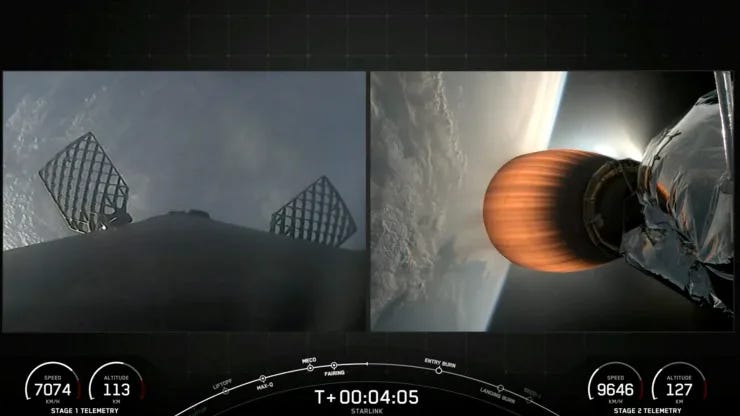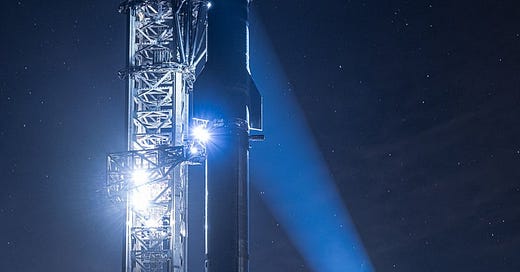SpaceX’s Falcon 9 Rocket Experiences Rare In-Flight Failure, Grounded Pending Investigation
FAA: Assessing the incident during the uncrewed mission, which may cause delays in upcoming astronaut missions. Elon Musk, CEO, called it "rapid unscheduled disassembly" (RUD)— jargon for explosion.
SpaceX's Falcon 9 Inflight Failure and Its Implications
Overview
On July 11, 2024, SpaceX faced a significant setback when its Falcon 9 rocket malfunctioned during the Starlink Group 9-3 mission. An engine shutdown during the second stage burn resulted in 20 Starlink satellites being deployed into a lower than intended orbit. This incident marks a rare departure from the typical reliability of the Falcon 9, a crucial element of SpaceX’s success in space transport. As the flagship company of billionaire Elon Musk, such anomalies are particularly notable given SpaceX's prominent role in advancing space exploration (see video).
Details of the Incident
The mission, launched from Vandenberg Space Force Base in California, experienced an anomaly shortly after takeoff. The engine of the rocket's second stage failed to reignite, resulting in a premature shutdown and subsequent loss of the mission's payload. SpaceX CEO Elon Musk confirmed that a liquid oxygen leak was responsible for the "rapid unscheduled disassembly" (RUD)— jargon for explosion— leading to the destruction of the stage and its satellites, which are now expected to re-enter Earth's atmosphere and disintegrate.

Regulatory Response and Future Missions
The Federal Aviation Administration (FAA) has put a temporary halt to Falcon 9 launches pending a detailed investigation into the mishap. This grounding is anticipated to affect SpaceX's scheduled missions, including the high-profile Polaris Dawn and NASA's Crew-9 mission to the International Space Station. The FAA's rigorous oversight will ensure that SpaceX identifies the root cause and implements effective corrective measures before resuming operations.
Statements and Stakeholder Confidence
Despite the failure, stakeholders like billionaire Jared Isaacman remain optimistic about SpaceX's capacity for rapid recovery and problem-solving. Isaacman, whose private Polaris Dawn mission is directly impacted, expressed unwavering trust in SpaceX's capabilities, underlining a readiness to proceed as soon as the company resolves the issue.
SpaceX's Historical Performance and Prospects for Recovery
Historically, the Falcon 9 rocket has demonstrated exceptional reliability, with over 350 successful launches since its debut. This track record suggests that SpaceX is well-equipped to address the current challenge efficiently. Industry experts are optimistic about the company's ability to undertake a thorough investigation, apply necessary modifications, and return to its rapid launch cadence.
Conclusion and Forward-Looking Statement
The recent Falcon 9 failure, while a setback, is a reminder of the inherent risks in spaceflight. It underscores the importance of stringent testing and continuous improvement in aerospace ventures. As SpaceX works towards diagnosing and correcting the fault, the space community watches closely, hopeful for a swift and robust return to flight operations.
Parting Note: The ‘Stranded” NASA Astronauts
This incident occurs amid challenges elsewhere in the space sector, notably with two NASA astronauts, including India-origin Sunita Williams, currently facing delays on the ISS due to a malfunction in Boeing’s Starliner crewship. Such events underscore the inherent challenges of space exploration and highlight the resilience and innovation of companies like SpaceX. With the anticipated resumption of SpaceX launches following FAA investigation and clearance, confidence in SpaceX’s commitment to safety and reliability is expected to be reinforced. Meanwhile, the space community is closely monitoring the situation, hoping for the safe and timely return of the NASA astronauts by the 21st of July deadline.




